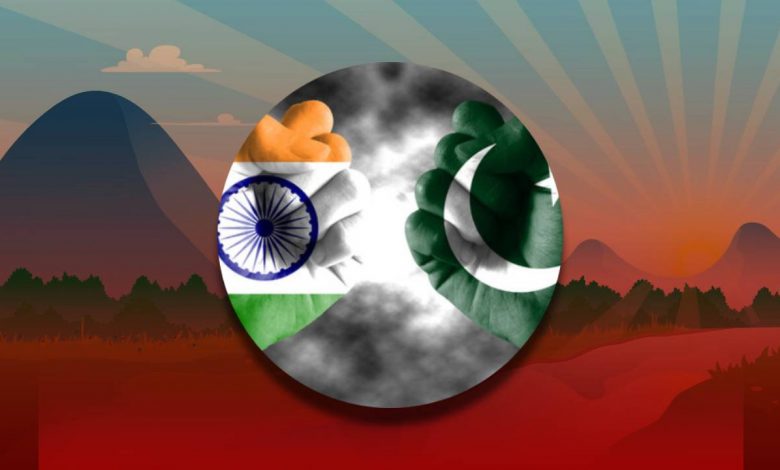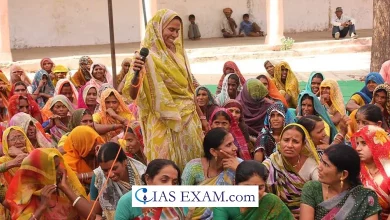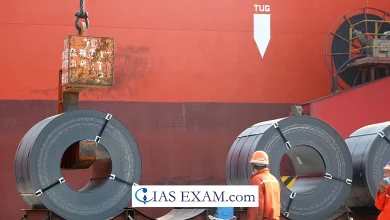Daily Current Affairs for UPSC
Indus Water Treaty

Topic- International Relations [GS Paper-2]
Context- The World Bank has appointed a neutral expert and a chairman of the Court of Arbitration regarding the Kishenganga and Ratle hydroelectric power plants, in view of disagreements and differences between India and Pakistan over the Indus Water Treaty.
Key Highlights
- The Indus Water treaty sets out a mechanism for cooperation and information exchange between the two countries i.e. India and Pakistan regarding their use of the rivers.
- But however, both India and Pakistan disagree over whether the technical design features of Kishenganga and Ratle hydroelectric power plants contravene the Treaty.
- Hence Pakistan asked the World Bank to facilitate the establishment of a Court of Arbitration to consider its concerns about the designs of the two hydroelectric power projects.
- Whereas India asked for the appointment of a Neutral Expert to consider similar concerns over the two projects.
- Keeping eyes on the demands of both of the countries, the World Bank has appointed Michel Lino as the Neutral Expert and Sean Murphy as Chairman of the Court of Arbitration.
Indus Water Treaty
- The treaty was signed by India and Pakistan in 1960 after nine years of negotiations, with the Washington based World Bank being a signatory.
- The Indus river basin consists of six rivers flowing through India and Pakistan namely Indus, Jhelum, Chenab, Ravi, Beas and Sutlej.
- The rivers originate from Tibet and flow through the Himalayan ranges to enter Pakistan, ending in the south of Karachi.
- In 1947, when both of the nations were partitioned, the line of partition, aside from delineating geographical boundaries for India and Pakistan, also cut the Indus river system into two.
- Both India and Pakistan were dependent on water from the Indus river basin to keep their irrigation infrastructure functional and hence, equitable distribution was necessary.
- Initially, the Inter-dominion accord of May 1948 was adopted by both nations.
- According to this accord, both countries, after meeting for a conference, decided that India would supply water to Pakistan in exchange for an annual payment made by the latter.
- This agreement however, soon proved to be a failure as both the countries could not agree upon its common interpretations.
- In 1951, in the backdrop of the water sharing dispute, both the countries applied to the World Bank for funding of their respective irrigation projects on the Indus and its tributaries.
- Hence the World Bank offered to mediate the conflict and acted as a signatory between India and Pakistan for signing Indus Water Agreement.
- At last in 1960, after nearly a decade of fact finding, negotiation, proposals by the World Bank and with certain amendments to them, an agreement was finalised between the two countries.
- Finally the Indus Waters Treaty (IWT) was signed by former Prime Minister Jawaharlal Nehru and then President of Pakistan, Ayub Khan in 1960.
- The former Vice President of the World Bank, W.A.B. Iliff, also signed it as a signatory to the Treaty.
Provisions under the Treaty
- The Indus Water Treaty prescribed the proportion of water from the six rivers of the Indus River System to be shared between India and Pakistan.
- It allocated the three western Rivers i.e. Indus, Chenab and Jhelumto Pakistan for unrestricted domestic use and it barred India for certain non consumptive, agricultural and domestic uses.
- On the other hand the three Eastern rivers i.e. Ravi, Beas and Sutlej were allocated to India for unrestricted usage.
- This means that 80% of the share of water or about 135 Million Acre Feet (MAF) went to Pakistan, whereas India got the rest 33 MAF or 20% of water for use.
- The treaty also asked both the countries to establish a Permanent Indus Commission constituted by permanent commissioners on both sides.
- The duties of the commission include serving as a forum for exchange of information on the rivers, for continued cooperation and as the first stop for the resolution of conflicts.
- With Pakistan having rights over the waters of Jhelum, Chenab and Indus,
- Annexure C of the treaty allows India certain agricultural uses,
- Annexure D allows it to build ‘run of the river‘ hydropower projects which do not requiring live storage of water.
- The treaty also allows Pakistan to raise concerns over such projects being built by India, if it does not find them to be compliant with the specifications.
- It also requires India to share information on the project design or alterations made to it with Pakistan, which is required to respond with objections, if any, within three months of receipt.
- India is allowed to have a minimum storage level on the western rivers which means that it can store up to 3.75 MAF of water for conservation and flood storage purposes.
- The treaty also provides for a three step dispute resolution mechanism, with certain provisions such as
- Queries on both sides can be resolved at the Permanent Commission, or can also be taken up at the inter-government level.
- In case of unresolved issues or differences between the countries on water sharing, such as technical differences, either side can approach the World Bank to appoint a Neutral Expert (NE) to come to a decision.
- And if either party is not satisfied with Neutral Expert’s decision or in case of “disputes” in the interpretation and extent of the treaty, matters can be referred to a Court of Arbitration.
- The treaty does not mention a unilateral exit provision and is supposed to remain in force unless both the countries ratify another mutually agreed pact.





.png)



